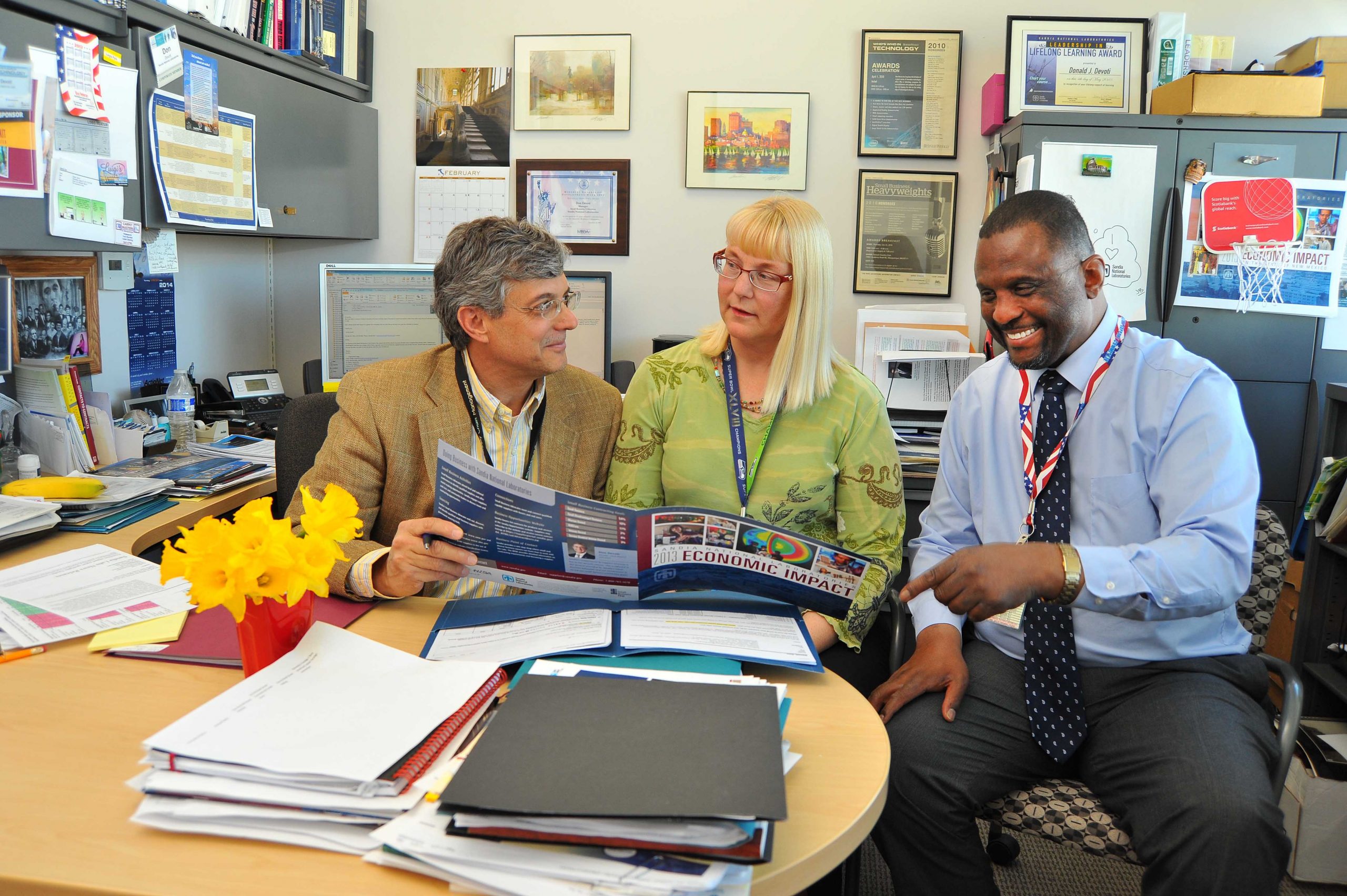ALBUQUERQUE, N.M. — Sandia National Laboratories has changed the way it categorizes purchased goods and services by linking each acquisition to a specific industry code. “This change in our data systems allows Sandia to better describe to our stakeholders, customers and the general public how we spend our money,” said Don Devoti, manager of the labs’ Small Business Utilization Department.
Sandia categorized purchases with an internally generated code before the June 30 switch. Under the new system each item or service must include a North American Industry Classification System (NAICS) code, the standard used by the federal government to categorize businesses and to collect, analyze and publish statistical data on the U.S. business economy.

“There’s a NAICS code associated with everything a business can do,” said supplier relations specialist Jim Green. “If you make a widget, there’s a code. If you build something, there’s a code. If you consult, there’s a code.”
The NAICS system lets Sandia, which spent roughly $975 million on goods and services in fiscal year 2013, report more precise data to the U.S. Department of Energy, which oversees the labs, and to Congress and others. “We can say that for code X we spent X dollars and for code Y, Y dollars,” Green said. “There’s a confident database, a foundation. We’re using industry standardized codes rather than internally created purchase categories.”
Where do the dollars go?
Marie Myszkier of supplier relations said Sandia can “better answer the question, ‘How do we spend taxpayer money?’ We can more exactly identify what types of goods and services we as a lab are buying and how much we spend with whom. It’s the perfect system if you really want to know where the dollars are going.”
Another advantage to assigning all purchases a code is the ability to more accurately report the business size and socioeconomic status of the supplier for every product or service purchased. Myszkier said an important distinction is that a company can be large or small depending on what it’s selling. For example, a company — based on revenue and number of employees in a particular department — can be small when it offers construction but large when it consults.
“That’s the kind of specific and accurate data we can collect using the NAICS system,” Myszkier said. “Under the former system if there was a question about the size of a company we always defaulted to large to be conservative in our small business data reporting. By consistently using NAICS codes we get succinct data at the point of sale versus generalized data to determine size and socioeconomic standards. Because we have integrated the codes into our purchasing applications, we have all the information in one place and can create more sophisticated reports.”
Purchasing goals for small and minority-owned businesses
Myszkier said another plus is that by looking at suppliers and their NAICS codes, procurement managers can better strategize in purchasing. “It takes acquisition planning to another level by opening doors in the analytics of what we buy,” she said. “We are better able to prepare, plan and improve.”
And the NAICS system allows the Small Business Utilization Department to more accurately track the laboratories’ purchasing goals with small and minority-owned companies. “It shows how strongly committed Sandia is to supporting small business,” Devoti said. “We will have the best data possible to reflect that.”
The change means suppliers must register in the federal System for Award Management, or SAM, database, and certify the types of products or services they sell. “You can have one code or you can have 20,” Green said.
The NAICS project began in early January. “This has been a tremendous team effort by business, procurement and information technology staff,” Devoti said. “It was a wonderful collaboration.”
Click here for more information on contracting with Sandia.